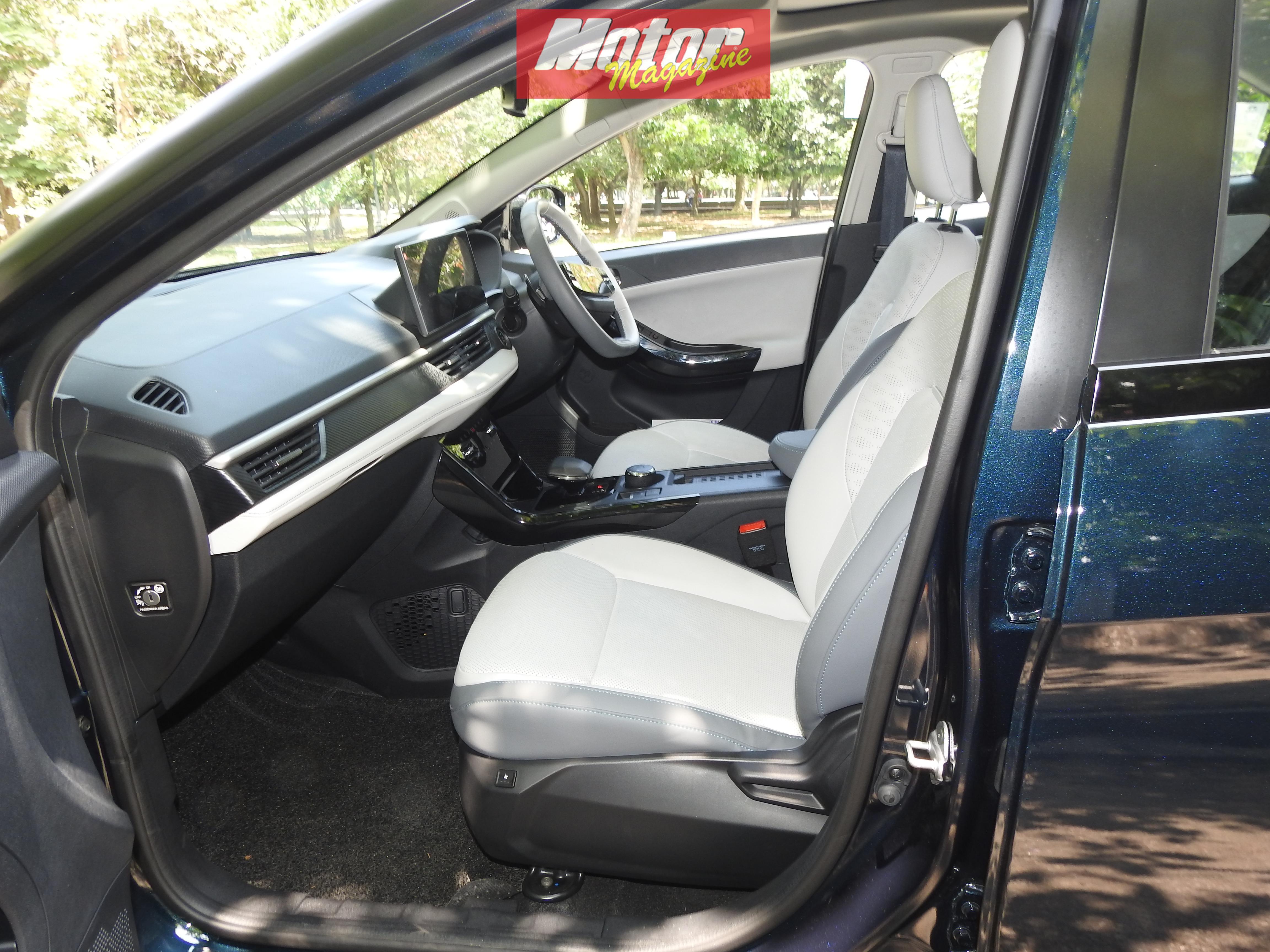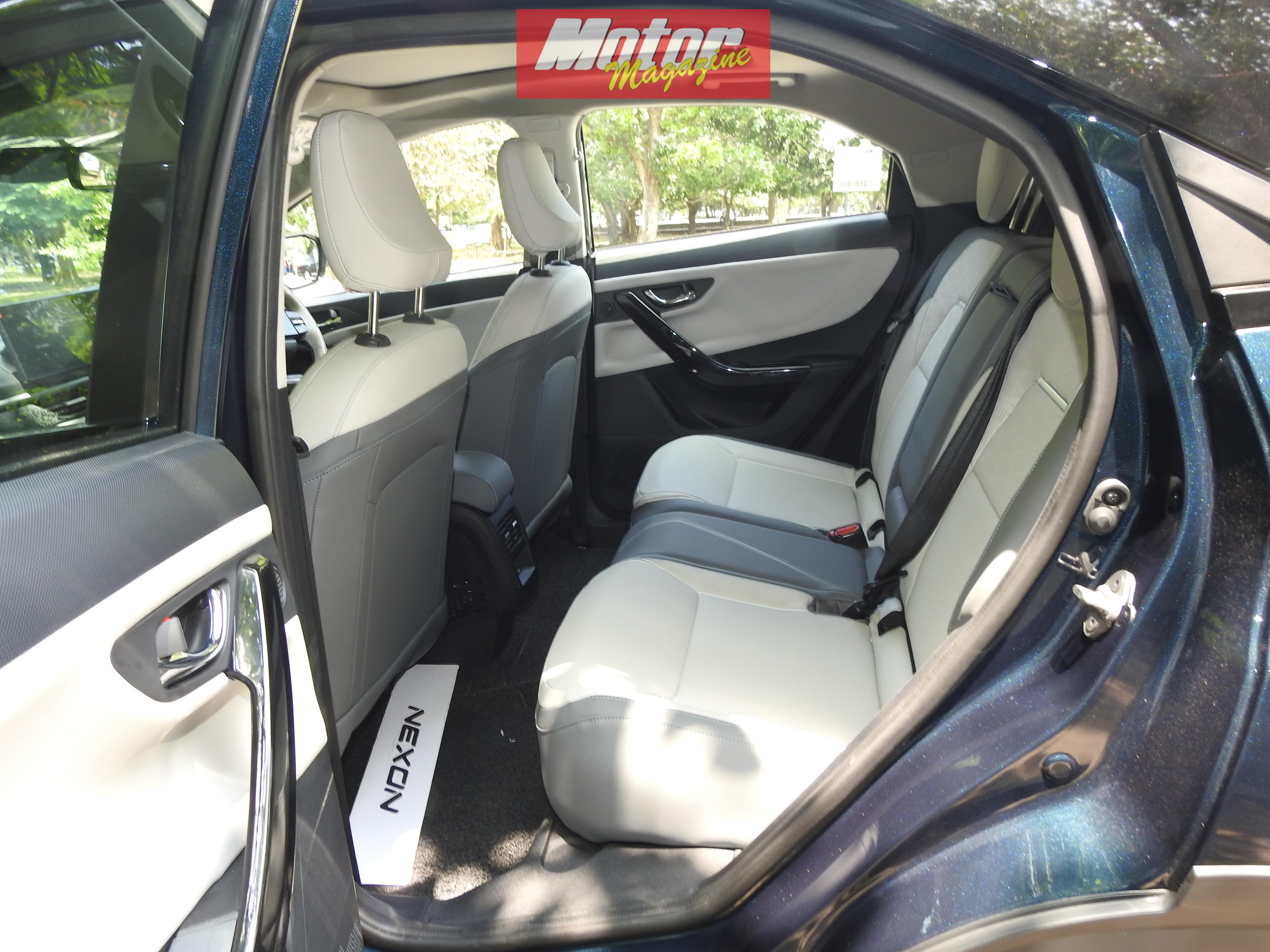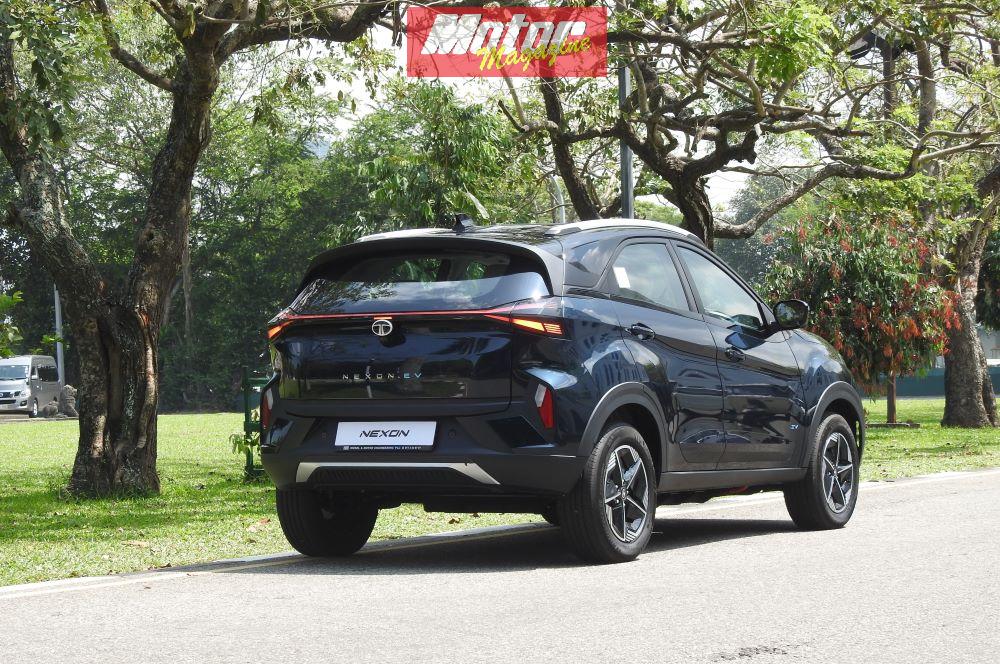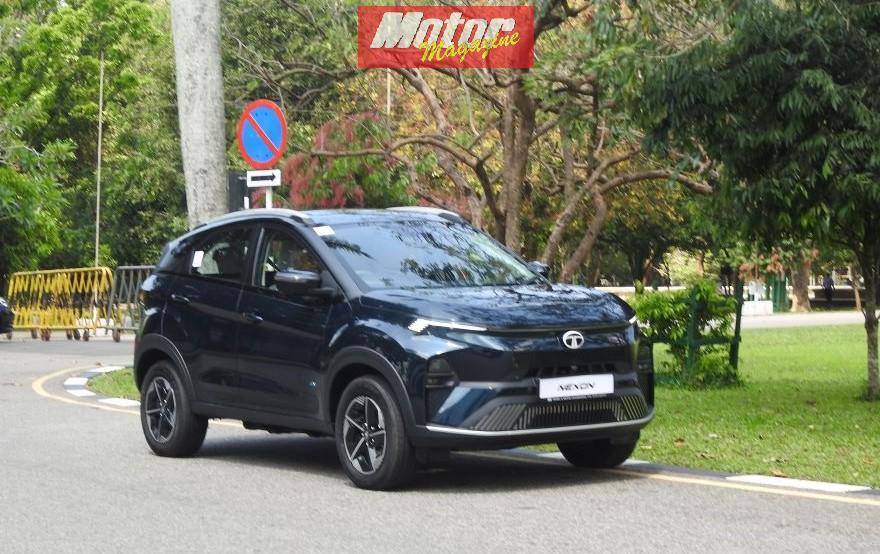Human psychology is a curious thing. Step into a car that smells like a premium European model, feels as solidly built as one, and drives with the same confidence, and suddenly, your subconscious takes charge. Without thinking, your left hand instinctively reaches for the adjacent stalk to indicate just like you would in any European car.
Despite having been on a steady diet of old and new European and Japanese cars, my subconscious went straight into "Euro mode" when I got behind the wheel of the latest Tata products, and kept turning on the wipers instead of indicating.
For many of us, the mere mention of an Indian car
brand conjures up images of hard, scratchy plastics, overpowering chemical
smells from cheap materials, and loose, unresponsive controls. It's a stereotype
that’s hard to shake. But here's the thing: it’s time to reset our
expectations. The new range of Tata cars has completely shattered those
outdated perceptions.

First Impressions
The Nexon EV was the last car I stepped into after
a full day of (Tata) testing. When our Deputy Editor, Ashraaq, did a full-bore
launch in the Nexon while I was moving another car, I genuinely thought
something had catastrophically failed in mine, so much so I had to double-check
with Editor-in-Chief Nimal that the noise was indeed wheelspin coming from the
Nexon.
The words wheelspin and Tata cars have never before appeared in the same sentence in a Sri Lankan motoring publication. So, I cautiously approached the Nexon trying to keep my journalistic impartiality intact, while my automotive elitism was telling me to nitpick. Read till the end, this car has a few good surprises up its sleeve.
Exterior
The Nexon has been with us for a while. It was facelifted recently for a second time to bring the looks up to date, inside and out. The shoulder line and the door handles which remain unchanged made the side profile look a tad dated. However, in a country coming out of a five year vehicle import hiatus, it looks fresh and received all types of attention that you’d expect driving a brand new high riding vehicle.

The light bar in the front and rear that greeted whenever you approached the car gave it a much more modern and upmarket feel that is not yet present in this segment. The vertical metal slats gave the car some much needed presence giving the impression its bigger than it really is. At the back, the refreshed rear end kept things relevant. With the blacked-out wheel arches the Nexon could certainly benefit from a nice set of 17- or 18-inch wheel, ideally with a few milimeters of extra offset.
One area that lets it down in the looks department is that old Indian car design trait of having a side valence elevated above the wheel centers. I’m sure it is very practical in the Indian countryside when a wheel drops into a deceivingly shallow gutter and the car is still able to climb out with no visible damage. But it is not really a necessity in this market and segment.
Interior
Stepping into the car, you can throw away any
preconceived notions you may have had about Tata, or Indian cars in general.
This is where the Nexon most convincingly elevates its game, with the JLR
influence paying clear dividends. In our test car, most of the tactile surfaces
were finished in a supple two-tone grey leatherette. The texture was convincing
enough that it took some gentle caressing to realize it wasn’t natural hide.
The two-spoke, two-tone steering wheel and the gear
shifter are straight out of the Range Rover design office, down to the button
layout. The inclusion of an electronic handbrake on higher trims further
cements the luxury Euro feel. Even the textured dashboard trim adds a layer of
visual depth that's rarely seen in this segment.

The rear seats offered plenty of space and feeling
of space in no small measure, thanks to another uncommon feature in this
segment, a panoramic roof. That, along with rear AC vents and armrest puts the
Nexon ahead of its Japanese rivals.

The Gadgets
This is where Tata Nexon truly finds itself
punching above its weight class. I found numerous touches and features that
would have upmarket customers trading down or purchasing a Nexon as a second
car.
Ventilated seats since its introduction in the ‘98 Mercedes S Class has for the most part remained the preserve of top end luxury cars. Unlike heated seats, the mechanics behind ventilated/cooled seats are rather complex, so much so they wouldn’t make sense in lesser cars. Yet the humble Nexon offers three ventilation settings on both its front seats and having had mine running on full throughout the test I can assure they are very effective.
Another standout feature that is making its way into this segment that the higher trim Nexon’s benefit from is an air purifier with a PM2.5 filter. If you live and work around greater Colombo I cannot stress enough the importance of this feature, particularly for the health of young children. It was yet another feature that had me drawing comparisons between the Nexon and top-level European cars.
Voice recognition in the Nexon worked impressively well and was on par with systems found in modern upmarket cars. After asking me to read out a few phrases, the system responded quickly, save for the occasional hiccup when I spoke in longer sentences. What truly impressed me was that the functionality wasn’t limited to just audio and HVAC controls but it extended to operations like opening and closing the sunroof. A pleasant surprise in this segment where even sunroofs are unavailable on some competitors.
One feature that was available, but not fitted to our upper trim ‘Empower’ tester, that would really cement the pseudo luxury car credentials, is adaptive cruise control. Given the poor road markings and road signs on our roads, this feature brings any car to the highest level of autonomous driving that can be safely performed locally. Certainly, an option worth ticking.
An interesting feature gaining traction in lifestyle EV’s, and one that’s available in the Nexon, is the ability to charge auxiliary devices using the vehicle’s charging port. In addition to this Vehicle-to-Load (V2L) function, the Nexon also supports Vehicle-to-Vehicle (V2V) charging, allowing you to top up another EV directly from its battery.
Performance and Handling
145 bhp and 215 Nm might not sound like much in
today’s market. But in a segment where even two-thirds of that is the norm, a
spirited drive in the Nexon will leave many road users surprised. Tata claims a
0–100 km/h time of 8.9 seconds, but in Sport mode, it feels at least a second
and a half quicker thanks to the initial surge of power and the instantaneous
torque from the electric motor. Unlike many EVs, it doesn’t feel like the
electronics are holding you back. Power delivery is immediate and continues to
build until you're well past the highway speed limit.
Despite its jacked-up stance, the Nexon handles corners and high-speed lane changes with confidence. When it’s time to stop, it calls on its four-wheel disc brakes to bring itself to a safe and controlled halt. Meanwhile, the Japanese are still yet to bring rear disc brakes to the party in this segment.

The paddle shifters behind the steering wheel control the motor’s regenerative braking, offering three levels of adjustment. The highest setting comes close to one-pedal driving, with smooth and progressive ‘engine braking’. Regeneration increases via the right paddle and decreases via the left, which is the opposite of what most drivers expect from conventional paddle shifter setups.
Comfort
The Nexon offers comfortable seating and a smooth
ride that’s on par with others in its segment. What sets it apart is the
above-average cabin ambience, featuring upmarket colour combinations and design
themes reminiscent of its step-brother, the Range Rover. With features like
ventilated seats and an air purifier selected, the Nexon starts to scoff at
entry-level luxury cars."
The rear seats provide adequate support, and the
relatively flat bench makes three-abreast seating comfortable, at least for
shorter trips.
Thanks to its generous comfort features and the
Arctic-grade performance of its AC, the Nexon showcases many of its strengths
squarely in the comfort category.
Economy
The 45 kWh battery in the Nexon is small by modern
standards. Yet DIMO claims a 400 km range while the brochure promises close to
500. Those are very impressive numbers considering 10 years ago we couldn’t
manage half that from the same battery capacity in a Nissan Leaf. A 400 km
range from a battery of this size also makes it much cheaper to run than a contemporary
Nissan Leaf, often considered one of the most economical EV’s.
Tata has very wisely chosen a liquid cooled setup for its battery for the Nexon given the climate it operates in. So battery degradation should be minimal even after the 8 year 160000 km battery warranty runs out.
Reliability and Aftersales
What truly sets Tata apart in the way it builds its
cars is its procurement strategy of sourcing parts from some of the most
prominent original equipment (OE) manufacturers around the world, while others
in the segment often rely on local sourcing. This global approach to quality
isn’t new for Tata; it was famously adopted during the development of the Nano
in the 2000s, a budget car with a massive engineering budget. The sheer number
of Nanos still on the road today that have clocked over half a million
kilometers on their original engines, is a testament to the genius of that
strategy.
Peeking under the hood of Tata’s new generation of
vehicles reveals a similar story. The array of global OE supplier names, some
of which you’d typically associate with German marques, adds to the perception
of robust, high-quality engineering.
Backing this is Tata’s generous warranty coverage:
3 years or 125,000 kilometers for the vehicle, and 8 years or 160,000
kilometers for the battery and motor in the EV variant. That peace of mind is
reinforced by DIMO’s stellar aftersales reputation. From 24-hour roadside
assistance anywhere in the country, regardless of vehicle age, to service
centers stocked with state of the art tools and staffed by some of the best
technicians in Sri Lanka, ownership feels reassuringly premium.

Nexon Vs. Premium cars Vs. Tata of old
Tata gained a significant advantage through its
acquisition of Jaguar-Land Rover in 2008, inheriting both technical know-how
and craftsmanship. This allowed them to incorporate premium features into
smaller cars without incurring massive development costs, enabling them to
undercut competitors on price.
On the flip side, especially in countries like ours
where Tata has long been known for its no-nonsense commercial vehicles, it can
be a bit jarring to witness the brand's swift upscale transformation. That said
Tata hasn’t entirely shed its utilitarian roots. You can almost picture the
junior design team enthusiastically flipping through JLR catalogs while the
more seasoned engineers from the Telcoline era, and perhaps a few local OE
suppliers resistant to change, were left in charge of select components. The
result? Some elements like the old-school manual handbrake, fixed seatbelts on
lower trims, base rear view mirror or even the overly high rear valance feel
slightly out of sync with the otherwise modern and refined Nexon.
Throughout the test, it was impossible not to draw
comparisons with more luxurious cars, given the Nexon’s upmarket features.
Automatic headlights, rain-sensing wipers, and a cooled glove-boxes - once the
reserve of European luxury cars - are all present here. In more developed
markets, manufacturers would politely nudge buyers toward more expensive models
to access such features. The economics of the region play a major role in this
compact-yet-loaded approach. We can easily picture many high-end DIMO customers
purchasing a Nexon as a second car, or for their top employees, given its
strong luxury-car undertones.

Verdict
Tata promises a lot with the Nexon and its new
generation of cars and those promises don’t go unnoticed. But it’s only when
you see it in the metal and drive it that the true extent of the transformation
becomes clear. From its surprising performance and rich cabin ambience to its
premium equipment and above-class luxury feel, the Nexon kept us genuinely
hooked. Tata has made a massive leap from its utilitarian roots, and the
innovation and craftsmanship made possible by the JLR acquisition are clearly
paying dividends.
Now, it’s up to the motoring public: hold on to outdated notions about Indian cars and risk overlooking what is one of the best family cars in the segment, or take the leap and leave even luxury car owners scratching their heads.




